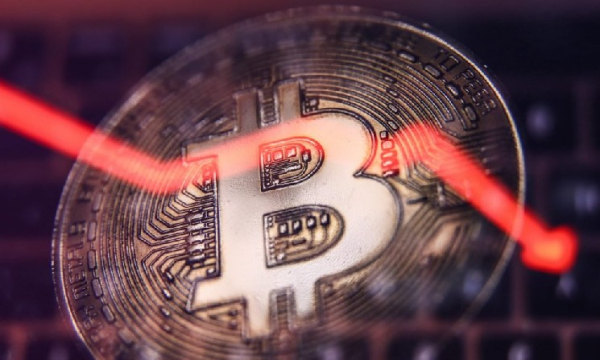Macro factors, spot ETFs, and Bitcoin's new price trajectory

Attitudes toward Bitcoin have changed dramatically. While it was recently considered a niche and speculative asset, it now finds itself at the intersection of the global economy and traditional finance. After a period of high but predictable volatility, the question is no longer, “Will Bitcoin become significant?” but rather, “How will it integrate into the global financial system?”
Today, its movement is determined by three key factors: the global macroeconomy, institutional capital coming through spot ETFs, and the growing practical value of the asset, which goes beyond simple speculation.
Macro factors shaping the outlook for the next 18 months
For seasoned investors, the time when Bitcoin was viewed in isolation is over. Its dynamics are now closely linked to global shifts in monetary policy and the global economy. The consensus is clear: the main drivers are liquidity and central bank policy.
But behind interest rates and monetary cycles lies a deeper story—one of currency conflicts and the redistribution of power in the global financial system. As Monty M. Metzger, CEO of LCX.com and TOTO Total Tokenization , notes:
“As the global currency war intensifies and the US debt crisis deepens, the dollar's role as the world's reserve currency is being questioned. Bitcoin is emerging as a digital alternative—a neutral global reserve asset for the new financial era. Institutional adoption within regulated markets will accelerate this transition.”
The perception of Bitcoin as an independent hedge asset strengthens long-term optimism, creating sustainable support regardless of the Fed's decisions.
However, liquidity analysis extends far beyond the US. Griffin Ardern, head of research and options at BloFin , draws attention to offshore liquidity flows. He notes that Bitcoin, unlike stablecoins, behaves like “digital gold”—an asset that exists outside the dollar system.
Consequently, its dynamics are influenced not only by the decisions of the Federal Reserve, but also by the policies of the ECB and the Bank of Japan, which shape the balance of global liquidity flows.
According to Ardern, there is currently a “slight reduction in offshore liquidity growth.” Combined with rising interest in gold, this is holding back Bitcoin's growth and pushing its price closer to its temporary upper limit. Therefore, it is important for investors to consider the actions of all major central banks, not just the US ones.
Kevin Lee, chief business officer at Gate.io , believes that Fed policy will remain the main macro driver until at least 2026:
“The September 2025 rate cut has already demonstrated Bitcoin's sensitivity to liquidity conditions.”
If the Fed returns to a tight stance due to inflation (for example, due to trade tariffs), this could be a negative factor. Conversely, a loose policy and easing tariff pressure will create the basis for growth. In this case, Bitcoin will likely stabilize in the $120,000–$125,000 range and could exceed $130,000 by the end of the year. Total market capitalization could reach $4 trillion, although altcoins will grow more slowly.
Vugar Usi Zade, COO of Bitget , believes that the main driving force will be the coincidence of a reversal in global monetary policy with the growth of institutional capital:
“When the Fed clearly signals a shift to easing, excess liquidity inevitably seeks protection from the depreciation of fiat currencies. Bitcoin, which has already seen strong demand through spot ETFs, becomes the main beneficiary of these flows.”
“Macrofactors create momentum, and institutional mandates give it structure. This is the new mechanism for price growth.”
Patrick Murphy, Eightcap's Managing Director for the UK and EU, adds:
“The next decision by the Fed or any other major central bank could trigger a massive influx or outflow of capital from the digital asset market.”
He emphasizes that Bitcoin is extremely sensitive to global liquidity flows and is becoming “digital gold” – an asset that benefits from favorable risk and liquidity conditions.
Overall, the main factor over the next 12-18 months is the interaction of global liquidity conditions (driven by the Fed, ECB, and Bank of Japan) and the growing acceptance of Bitcoin as an independent digital reserve asset against a backdrop of currency depreciation.
The ETF Effect: New Capital Structure and Trust
The launch of Bitcoin spot ETFs, particularly in the US, has been the largest structural shift in the history of the market. This isn't just a new influx of capital—it's a change in the very nature of market participants.
Sebastien Gilquin of Trezor notes:
“ETFs will attract long-term capital, but their main value is recognition. They make Bitcoin part of traditional portfolios and create a model that can be replicated with other assets like ETH or SOL.”
Thus, ETFs not only brought in institutional investors, but also made Bitcoin a legitimate and understandable instrument for financial advisors and asset managers.
XYO's Marcus Levin adds:
“Spot ETFs have already changed the investor profile. Bitcoin is now held by pension funds, family offices, and institutional allocators. Over time, this will make it a common part of diversified portfolios.”
According to Vugar Usi Zadeh , “patient, high-quality and long-term capital” enters the market through ETFs.
“These investors don't view Bitcoin as speculation, but as a strategic asset. They don't panic, which makes the market more predictable. ETFs aren't the endgame, but the starting point for the largest and most stable sources of capital.”
Vivienne Lin, Director of Product at BingX Labs , adds:
“ETFs make Bitcoin accessible through familiar financial mechanisms, removing the trust barrier for traditional investors.”
According to Gate.io, over 1.29 million BTC are already held in spot ETFs, and major funds like BlackRock continue to increase their positions. Bitcoin's price now reacts primarily to macroeconomic factors rather than crypto-specific ones.
Federico Variola, CEO of Phemex, warns: ETFs don't protect the market from shocks and liquidations. They make it more resilient, but they don't eliminate volatility.
“An ETF is a factor of long-term stability, but it is not a guarantee of peace of mind in the face of daily fluctuations.”
Thus, ETFs haven't eliminated volatility, but they have improved capital quality. The market has become less speculative and more institutional, creating a solid foundation that wasn't there before.
Beyond the Chart: Real Utility Signals
The true health of an ecosystem is reflected not in price, but in the development of technology and infrastructure. Key indicators include the growth of the Lightning Network and the adoption of self-custody and institutional storage solutions.
Gilken from Trezor says:
“Price is only part of the story. The real signals are the growth of Lightning and interest in self-custody. This is where the next chapter of Bitcoin begins.”
The Lightning Network transforms Bitcoin not only into a store of value, but also into a payment instrument—fast, cheap, and global.
Vivienne Lin confirms that Lightning Network activity is growing, as is demand for custodial services and on-chain operations.
“Bitcoin is becoming a working element of the financial infrastructure, not just a store of value.”
Vugar Usi Zade adds:
“The growing interest in Proof-of-Reserves and regulated asset custody is an important step toward transparency and trust. It's a key indicator of market maturity and CeFi's rapprochement with institutional capital.”
This development demonstrates a balance between convenience and decentralization, making the market more mature and sustainable.
The most underestimated risk: loss of decentralization
The main threat to Bitcoin today is not external bans or attacks, but the internal loss of decentralization due to complacency and disregard for the convenience of self-custody.
Sebastien Gilquin warns:
“If we stop developing convenience and ignoring regulation, Bitcoin will become less accessible. Self-custody and a user-friendly interface are what preserve its freedom.”
ETFs and custodial services make ownership easier, but they are creating a generation of investors who don't have control over their money.
Vugar Usi Zade notes:
“The main underestimated risk is operational security and mistakes in choosing asset storage.”
Vivienne Lin adds:
“Many people think that price growth reflects the network's strength. But it's important not only to follow the chart but also to understand where and how you store your assets.”
Conclusion: The maturation of the digital reserve
The next 12–18 months won't just be a story of supply shortages. Ahead lies a path of integration, stability, and growth in real utility.
Short-term fluctuations will depend on liquidity, but the long-term trajectory will be driven by institutional flows through ETFs and the development of the Lightning Network.
Bitcoin is gradually transforming from a speculative instrument into a neutral digital reserve—the foundation of a new financial era.
The post Macro factors, spot ETFs, and the new trajectory of Bitcoin's price appeared first on BeInCrypto.
Source: cryptonews.net



